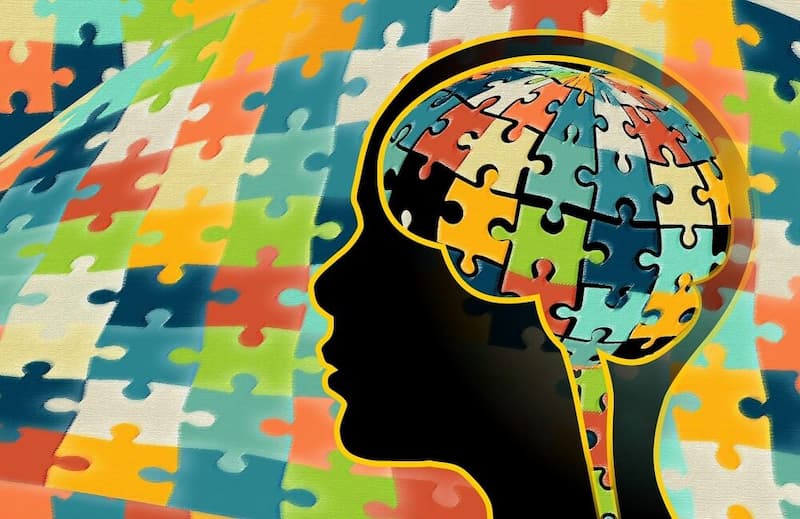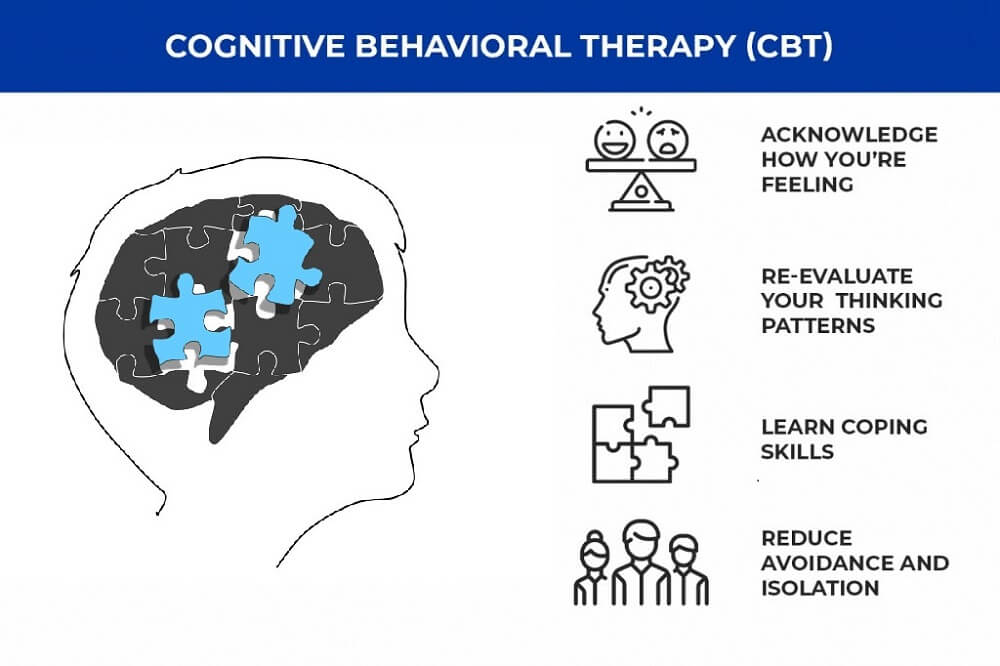
Autism refers to a spectrum of neurological and developmental disorders often characterized by social skills problems, difficulties in verbal and nonverbal communications, and repetitive behavior. Interventions for autism are essential to enable autistic kids to live as a part of society. Treatment modalities for autism include behavioral management therapy and stem cell therapy.
To understand more about the interventions available for the management of autism, including stem cell therapy and behavioral management therapy, please read more on this page. This article also explains the five types of behavioral autism therapies, describes how effective they are in managing autism and explains the best treatment for an autistic kid.
Contact us
Book a free online consultation to learn how stem cell therapy can improve outcomes of behavioral therapy in autism, as well as its cost and duration.

Medical Advisor, Swiss Medica doctor
Behavioral Therapy Management in Autism
There is no cure for autism, but interventions such as behavioral autism therapies help reduce the symptoms, such as cognitive difficulties. This kind of treatment is a method of managing autism that involves reinforcing the positive and the wanted ways of acting and reducing or restricting the unwanted or harmful behaviors. The unwanted behaviors that require modifications and management may include:
- inappropriate facial expressions
- unusual body language and movements
- poor eye contact
- repetitive movements
- loss of interest in relationships and other people
Because autism is mainly characterized by unwanted behavioral characteristics and speech and language deficiencies, behavioral therapy for autism and speech therapies are the mainstay in the management of autism. Despite therapy, which helps correct the way children act in different situations, being the most used treatment approach for autism, it should be combined with other forms of therapy as there is no single option that works alone.
Behavioral therapy has been effective in managing harmful or unwanted actions in patients with autism. Despite this, it is proven that it is costly, especially when used in the long term, and it requires a lot of effort from the therapist and/or caregivers. Behavioral therapy, once started, should be assessed periodically, and the changes needed should be applied within the process for the maximum benefit of the client. Though in most cases you go out to receive therapy for your kid, some kinds of exercises can be done at home.
There are different types of behavioral therapy, including applied behavioral therapy, verbal behavioral therapy, and cognitive-behavioral therapy. Each of these therapies is discussed later in the article.
The Benefits of Long-Term Behavioral Therapy
Many parents and guardians of children with autism are often concerned about how long their children should be in therapy. There is no specific answer to the number of months or years that the child continues with therapy since it depends on whether the child is improving. Improving in Autism means the child is slowly achieving milestones; the child can speak and interact well with other children. In neurodevelopmental conditions such as autism, long-term behavioral management is recommended. Therefore, autism and behavioral therapy are inseparable since all children with autism require this type of intervention so as to acquire the necessary skills.
The main benefits of long-term behavioral management include it helps in cultivating and maintaining a relationship between the child and the therapist. In terms of relationship, the therapist can understand the child well, understand the needs of the respective child, plan on the therapy, and respond to the needs of the respective child. Therefore, they can walk with the child through all the phases. In terms of relationships, long-term therapy is also advantageous to the child because due to frequent visits to the same therapist, the child can trust and form a relationship with the therapist. We understand that children with autism are not well able to create relationships, but due to the long periods of interaction, it develops, and the child can respond well to the therapist.
The second benefit is that with long-term therapy, the child can achieve positive outcomes such as:
- improved communication
- embracing proper body language
- achieving milestones for age
- improving sleep patterns
- achieving a new stage of freedom and independence.
Five Types of Behavior Therapy for Individuals with Autism
1. Applied Behavior Analysis (ABA)
ABA is a common behavioral therapy autism intervention. It is a strategy used first to understand someone’s way of acting or expressing themselves, and then to change it to a proper way. It is not a single therapy but involves using different approaches and methods to teach people with autism new skills such as improving social skills, personal care skills, and practical communication skills. ABA also helps reduce unwanted and problematic behaviors such as aggression and inattentiveness. These strategies are effective when used in young children hence referred to as early intensive behavioral intervention (EIBI).
2. Verbal Behavioral Therapy
This is a type of treatment for autism where a child who cannot talk is taught how to communicate and use language purposively. This strategy teaches the children through repetition, and they can understand communication and respond well using language. Therefore, the children are taught how to use words well and how words can help them express their needs and get what they desire.
3. Cognitive Behavioral Therapy
This type of therapy is often used in children with mild symptoms of autism and those who have other mental illnesses such as anxiety and depression. This type of therapy has two components. The first component is the cognitive part that changes how the children think about a specific situation. The behavioral component changes how the children respond or react to a particular problem. This cognitive-behavioural therapy autism approach teaches both the children and the adult caregivers how to help the child deal with complex and challenging situations in their everyday life.

4. Developmental and Individual Differences Relationship Therapy (DIR)
This type of behavioral therapy autism is also known as floortime therapy. It engages children with autism spectrum disorders (ASD) in activities and plays that they will enjoy and have fun. The parents, guardians, and other children are also involved in these activities. In this type of therapy, the child can gain new skills and are also able to interact with other people and their parents. Through these interactions, the child can achieve milestones in their sensory development, emotional development, motor skills, and communication.
5. Relationship Development Intervention Therapy (RDI)
This is a family-based approach intervention. In this behavioral therapy autism, the parent is the therapist, and it addresses one of the three core symptoms of autism, including inadequate social skills. This intervention aims to help children with autism spectrum disorders gain social skills and improve their emotional skills. This type of therapy allows the autistic child to be able to form personal relationships and be able to bond emotionally with others; therefore, they can be able to share their experience with other people.
How Much Behavioral Therapy Does a Child Need?
According to a study conducted in 1987, autistic children should receive long-term therapy. They should receive approximately 40 hours of therapy per week up to when they are three years old. Despite this, to achieve the best outcomes for every child, the therapy hours should be specific for each child depending on the age of the child and the level of skills. Therefore, the therapist should assess the child and suggest the number of hours of therapy to achieve the best results.
How Effective Is Behavioral Therapy for Autism?
According to the national clearinghouse on autism evidence and practice (NCAEP) recent report, behavioral therapy is the evidence-based practice method used in the management of autism.
More than twenty studies have shown that long-term behavioral therapy of approximately 40 hours a week for one to three years leads to improved outcomes in autism. These refer to enhanced social skills, improved use of language, and improvement in the symptoms of autism.
What Is the Best Behavioral Therapy for Autism?
According to therapists’ behavioral management, therapy that aims to correct someone’s way of acting is the best method for autism. However, the effectiveness of each type of therapy changes from one child to another; therefore, it is not easy to detect what therapy will be successful for your child. This is because what works for one child will not necessarily affect another. The best way to assess what will work for your child is to work closely with your therapist as they evaluate your personal case and advise on the best form of therapy for the specific child.
What Is Stem Cell Therapy for Autism?
Stem cell therapy for autism involves using mesenchymal stem cells (MSCs) that can be from the individual or donated. These stem cells can differentiate into any cell in the body. The supporters of stem cell therapy in autism claim that autistic characteristics result from inflammation and immune system defects. Therefore, they propose that injection with stem cells may reduce inflammation which may lead to reducing autistic characteristics.
Currently, our facility offers stem cell therapy for autistic children. This is mainly done in our Serbian branch, and the doctors are also flexible to go to a client’s location to carry out the procedure and carry all the necessary equipment.
Can Stem Cell Therapy for Autism Be Used Instead of Behavioral Therapies?
No, stem cell therapy cannot be used in the place of the therapy that helps correct the way of acting and self-expressing. They can only be applied together for maximum effectiveness. Thus, children with ASD who have undergone stem cell therapy also require behavioral therapy to improve their symptoms. This kind of treatment is to work hand in hand with behavior analysis center for autism that provides special kinds of therapy for autism spectrum disorder (ASD). Therefore, treatment based on stem cells should be used together with a type of behavioral therapy for autism such as cognitive therapy, etc.
You can learn more about how cell-based treatment works in autistic persons or contact us to book a free online consultation.
Contact us
Book a free online consultation to learn how stem cell therapy can improve outcomes of behavioral therapy in autism, as well as its cost and duration.

Medical Advisor, Swiss Medica doctor
Medical Advisor, Swiss Medica doctor







